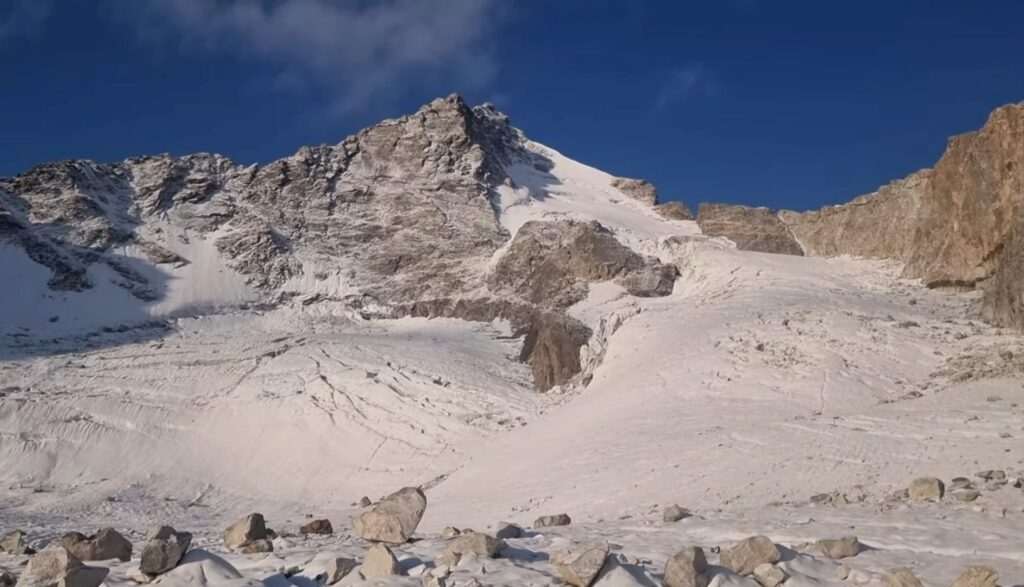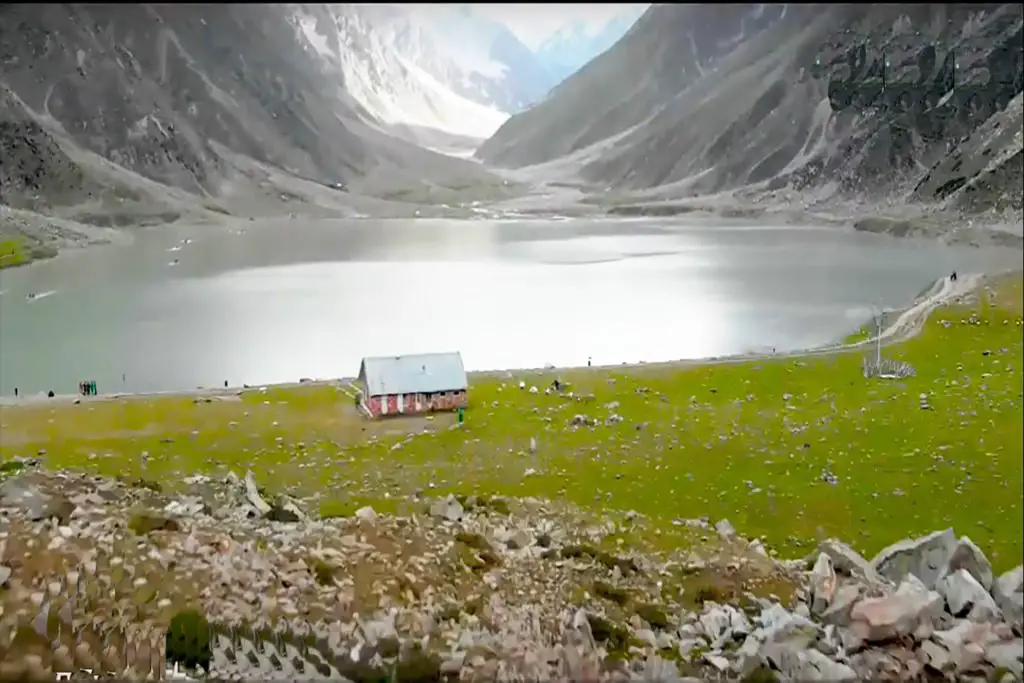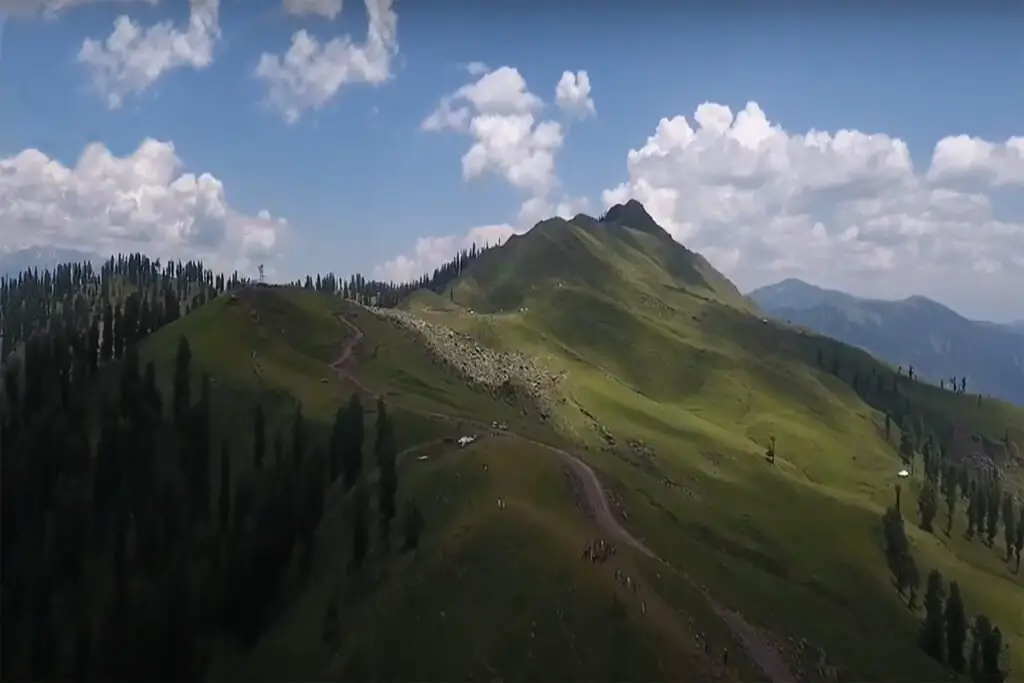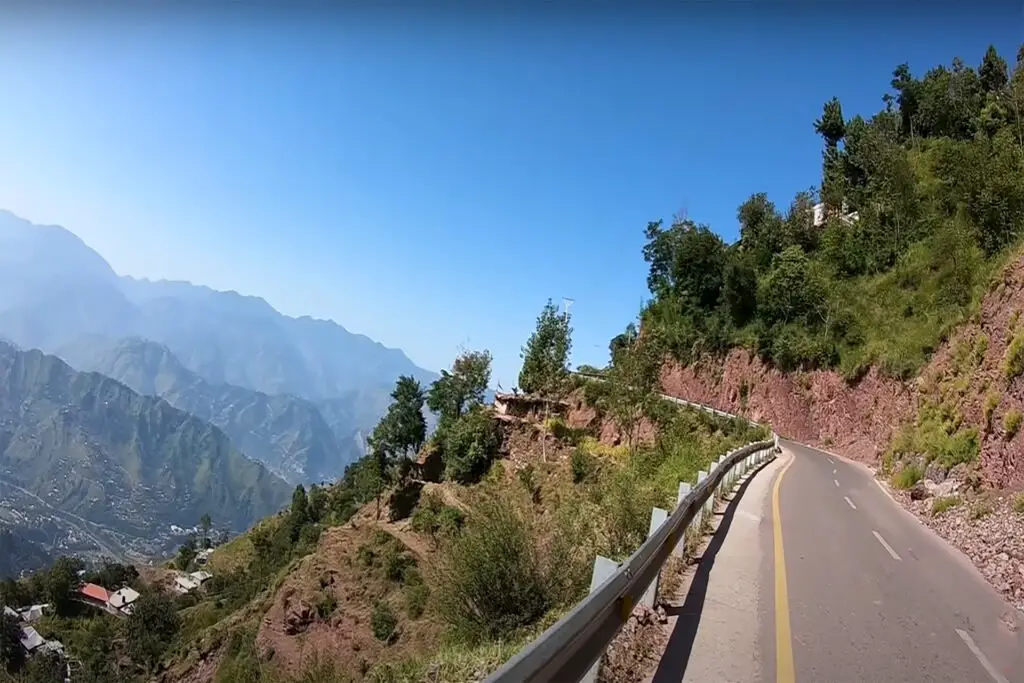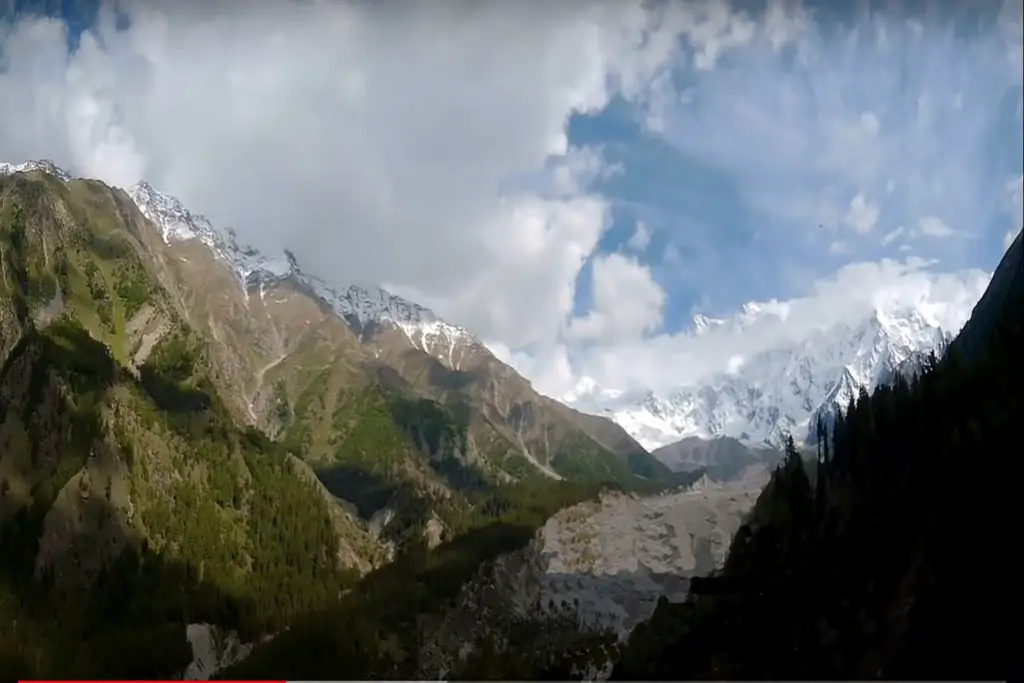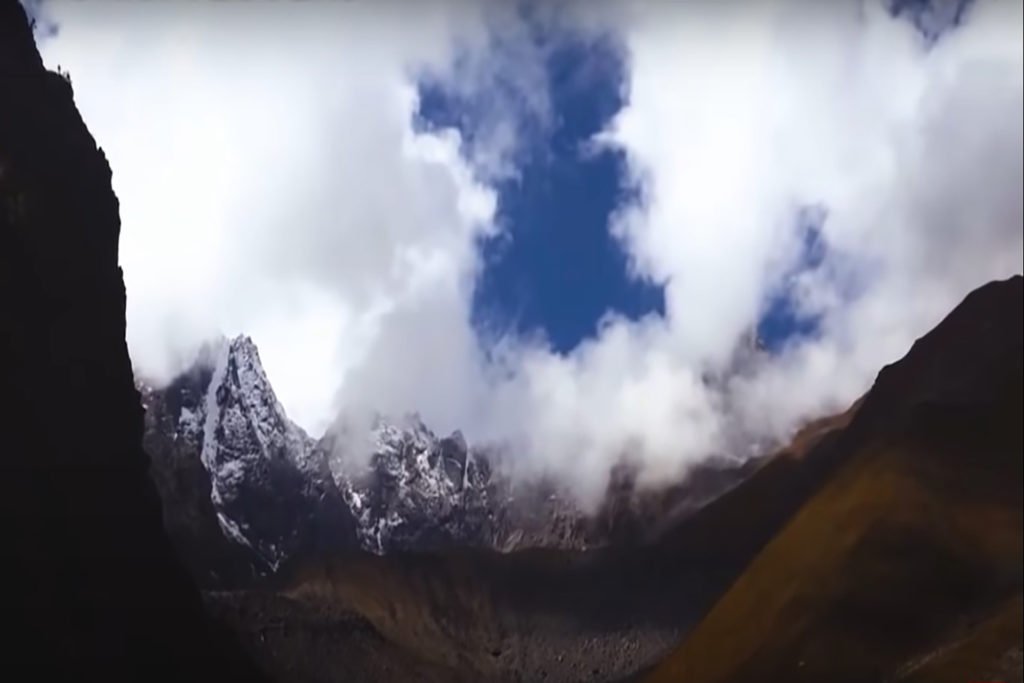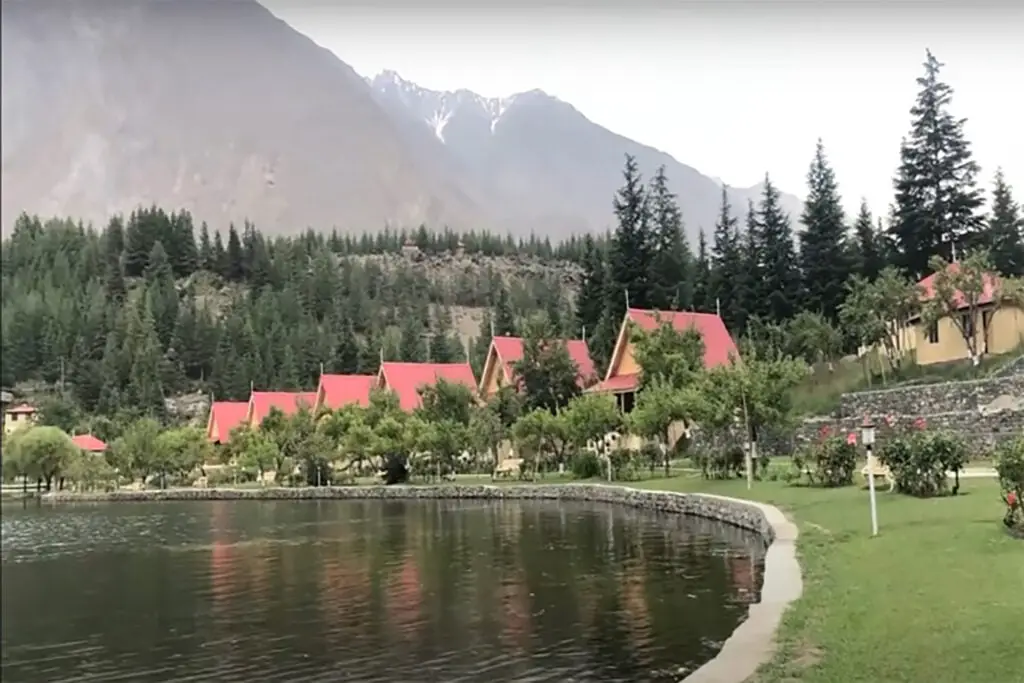Malika Parbat (Queen of Mountains) (el. 5,290 meters (17,360 ft)) is the highest peak in the Kaghan Valley, Khyber Pakhtunkhwa, Pakistan. It is about 6 kilometers (3.7 mi) south of Saiful Muluk Lake, near Ansoo Lake.
The name “Malika Parbat” means “Queen of the Mountains” in the local language of the region. This name is a testament to the awe-inspiring beauty and grandeur of the peak. It has been an object of fascination for mountaineers, trekkers, and nature enthusiasts alike for decades. The snow-capped peak is surrounded by dense forests, meadows, and pristine lakes that add to its breathtaking charm.
Malika Parbat Location & Elevation
Malika Parbat is a magnificent peak located in the Himalayan mountain range, situated in the Northern areas of Pakistan. It is the highest peak of the Hindu Raj Range, which lies between the Chitral and Gilgit valleys. This majestic mountain stands tall at an elevation of 5,290 meters or 17,356 feet and is one of the most prominent and challenging peaks in Pakistan.
Malika Parbat Summit
The first successful ascent of the Peak was made by a Japanese expedition in 1971. Since then, several expeditions from all around the world have attempted to conquer this majestic mountain. However, due to its steep and rugged terrain, the peak has only been climbed a handful of times. The challenging climb requires technical skills, endurance, and a great deal of physical and mental strength. Nevertheless, the experience of scaling this magnificent peak is truly unforgettable.
The Peak is not only famous for its mountaineering and trekking opportunities but also for its rich flora and fauna. The region is home to a diverse range of flora and fauna, including snow leopards, Himalayan ibex, and brown bears. The area is also a hub for several species of alpine flowers that add to the natural beauty of the landscape.
The mountain is well visible from the popular tourist spot of Lake Saiful Maluk in the Kaghan Valley. Malika Parbat is accessible from Saiful Muluk side of Naran Lake and Batakundi-Dadar Chitta Glacier. Malika Parbat consists of three peaks:
- Malika Parbat (North Peak),
- Malika Parbat Cresta and
- Malika Parbat (South Peak)
There are other peaks in Siran Basin, Khabanar Valley, and Burji Valley that offer considerable climbing difficulty, while from Burawai another circuit of low peaks is equally good for climbing.
Only twelve climbers have so far reached the summit of Malika Parbat (North Peak). The North Summit was first reached by Captain B.W. Battye and four Gurkha soldiers in 1920, followed by a second ascent by Trevor Braham, Norman Norris, and Gene White in 1967.
Best Time to Visit Malika Parbat
The best time to visit is from May to September when the weather is mild and the skies are clear. The region receives heavy snowfall during winter, making it inaccessible to visitors. However, during the summer months, the mountain offers a stunning view of its snow-capped peaks, lush green valleys, and sparkling lakes.
Malika Parbat Summit Information
- Duration: 9 days 8 nights to 12 days 11 nights (depending on the tour operator)
- Difficulty: Strenuous/Extreme
- Terrain: Bushes, glaciers, rock climbing, boulders and snow
- Temperature: Normal during the day while cool at night
- Maximum altitude: 5,300 meters
- Special category: Adventure (Ice climbing, trekking)
- Season: Beginning of June and beginning of September
Islamabad to Malika Parbat
- Islamabad to Naran
- Naran to Dader Medan by jeep 3hrs (Camp. 3200m)
- Dader medan to Base camp Trekk 4hrs (Camp. 3700m)
- Base camp to advance base camp 3hrs (Camp. 4000m)
- Advance Base Camp to camp 1. Trek 5hrs (Camp. 4700m)
- Summit push (5235m)
In conclusion, Malika Parbat is a gem of Pakistan’s natural heritage, offering a unique blend of adventure, natural beauty, and cultural heritage. The peak stands as a symbol of the region’s resilience and natural magnificence, attracting visitors from all around the world. A visit to this majestic mountain is an experience that is truly once in a lifetime.

